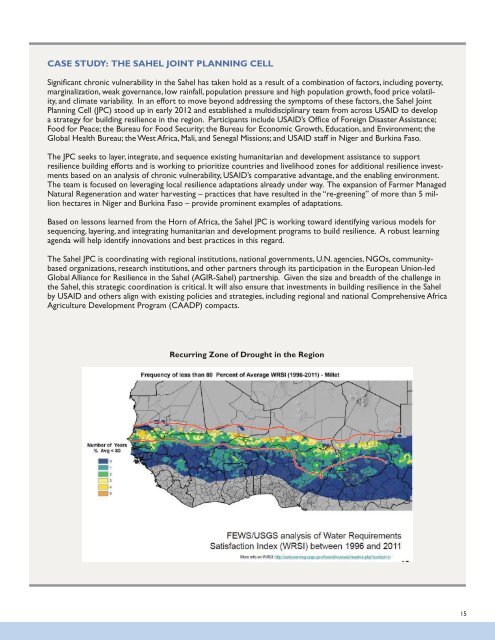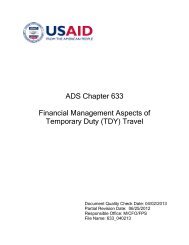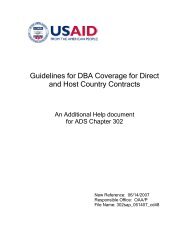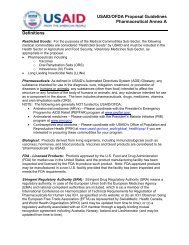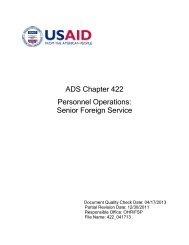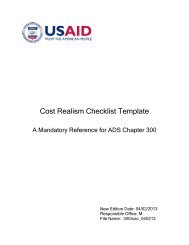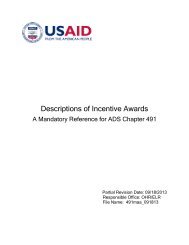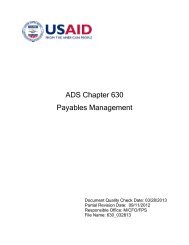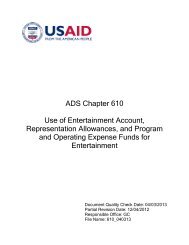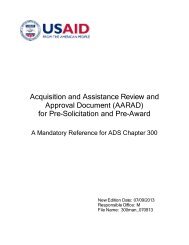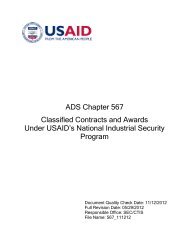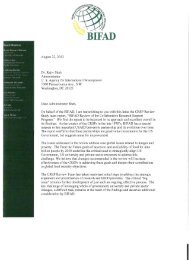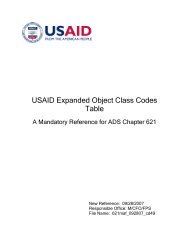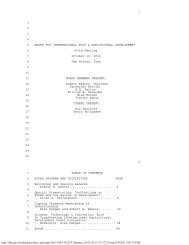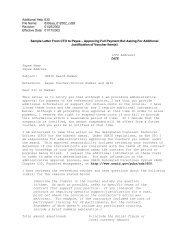USAID Policy Document - Resiliency FINAL 11-26-12.indd
USAID Policy Document - Resiliency FINAL 11-26-12.indd
USAID Policy Document - Resiliency FINAL 11-26-12.indd
- No tags were found...
Create successful ePaper yourself
Turn your PDF publications into a flip-book with our unique Google optimized e-Paper software.
CASE STUDY: THE SAHEL JOINT PLANNING CELLSignifi cant chronic vulnerability in the Sahel has taken hold as a result of a combination of factors, including poverty,marginalization, weak governance, low rainfall, population pressure and high population growth, food price volatility,and climate variability. In an effort to move beyond addressing the symptoms of these factors, the Sahel JointPlanning Cell (JPC) stood up in early 2012 and established a multidisciplinary team from across <strong>USAID</strong> to developa strategy for building resilience in the region. Participants include <strong>USAID</strong>’s Offi ce of Foreign Disaster Assistance;Food for Peace; the Bureau for Food Security; the Bureau for Economic Growth, Education, and Environment; theGlobal Health Bureau; the West Africa, Mali, and Senegal Missions; and <strong>USAID</strong> staff in Niger and Burkina Faso.The JPC seeks to layer, integrate, and sequence existing humanitarian and development assistance to supportresilience building efforts and is working to prioritize countries and livelihood zones for additional resilience investmentsbased on an analysis of chronic vulnerability, <strong>USAID</strong>’s comparative advantage, and the enabling environment.The team is focused on leveraging local resilience adaptations already under way. The expansion of Farmer ManagedNatural Regeneration and water harvesting – practices that have resulted in the “re-greening” of more than 5 millionhectares in Niger and Burkina Faso – provide prominent examples of adaptations.Based on lessons learned from the Horn of Africa, the Sahel JPC is working toward identifying various models forsequencing, layering, and integrating humanitarian and development programs to build resilience. A robust learningagenda will help identify innovations and best practices in this regard.The Sahel JPC is coordinating with regional institutions, national governments, U.N. agencies, NGOs, communitybasedorganizations, research institutions, and other partners through its participation in the European Union-ledGlobal Alliance for Resilience in the Sahel (AGIR-Sahel) partnership. Given the size and breadth of the challenge inthe Sahel, this strategic coordination is critical. It will also ensure that investments in building resilience in the Sahelby <strong>USAID</strong> and others align with existing policies and strategies, including regional and national Comprehensive AfricaAgriculture Development Program (CAADP) compacts.Recurring Zone of Drought in the Region15


